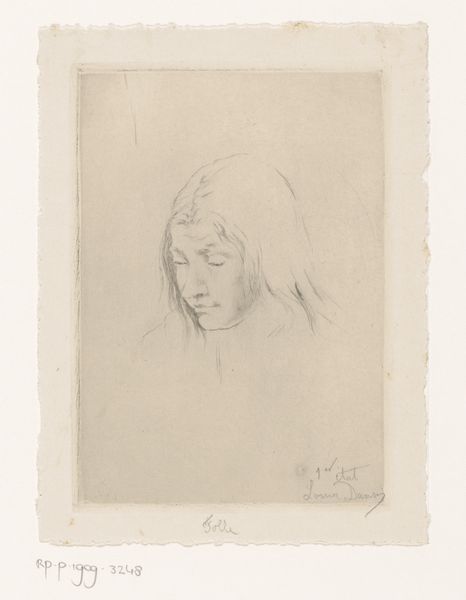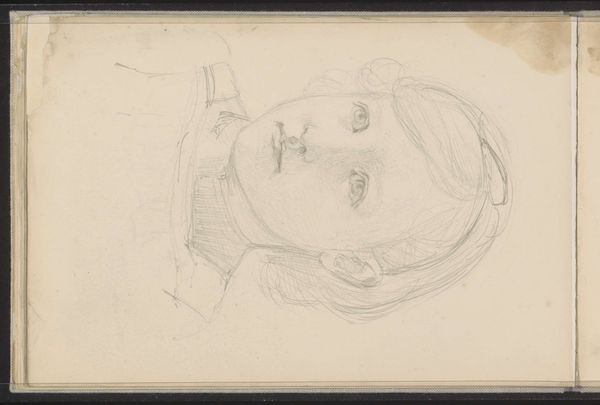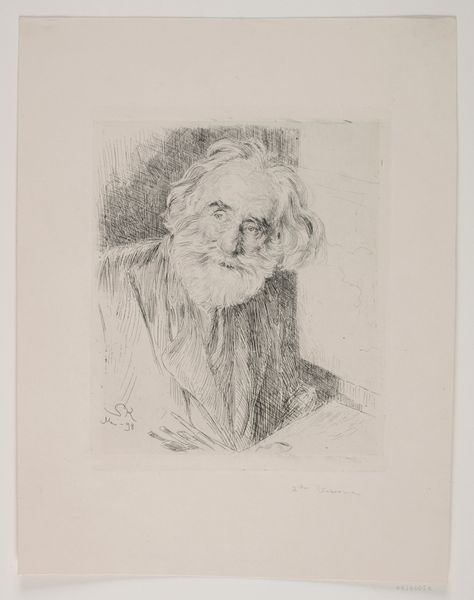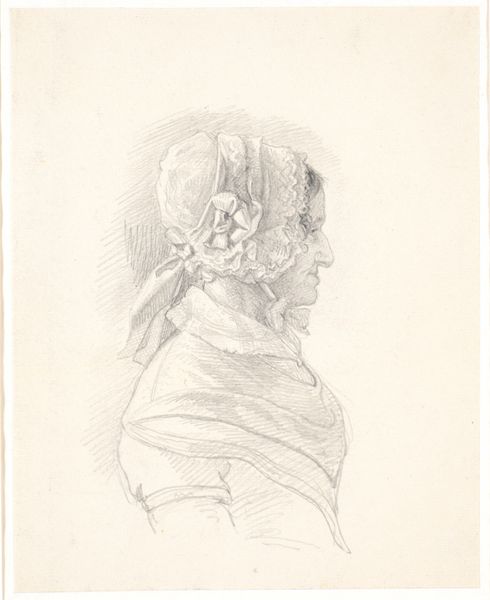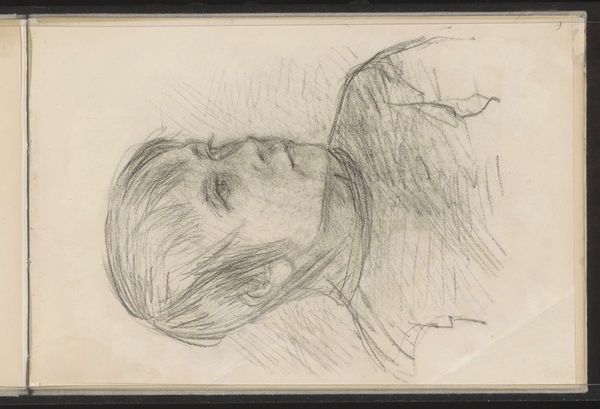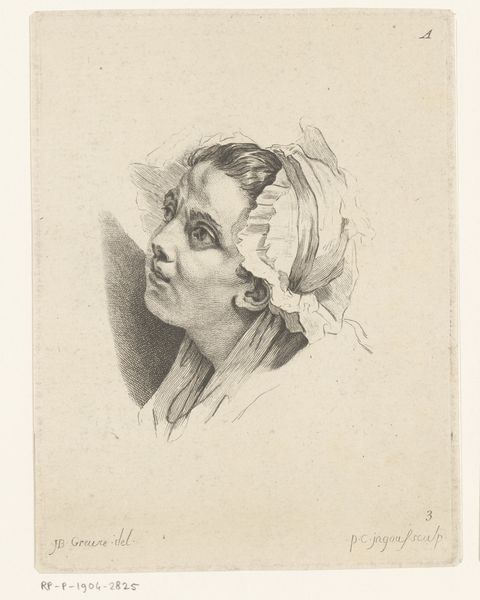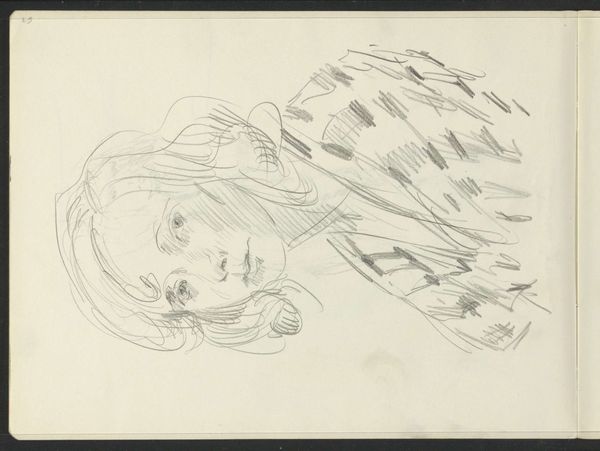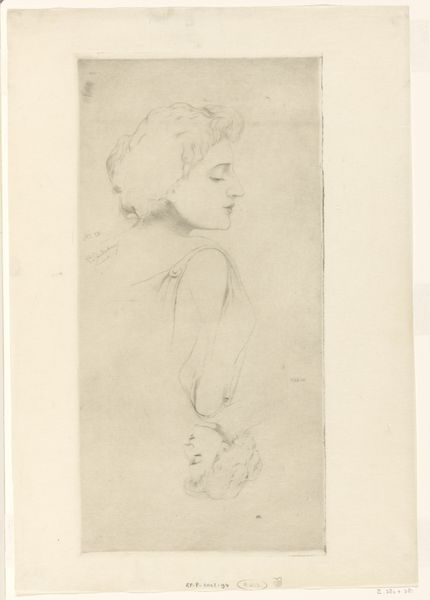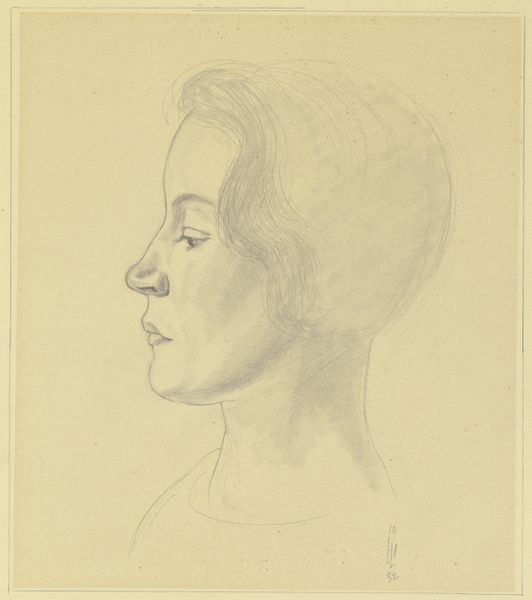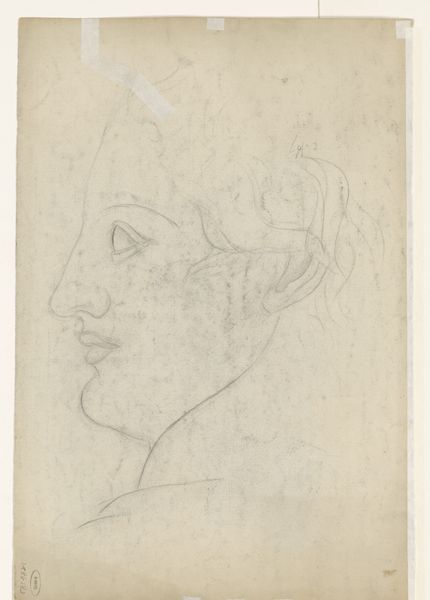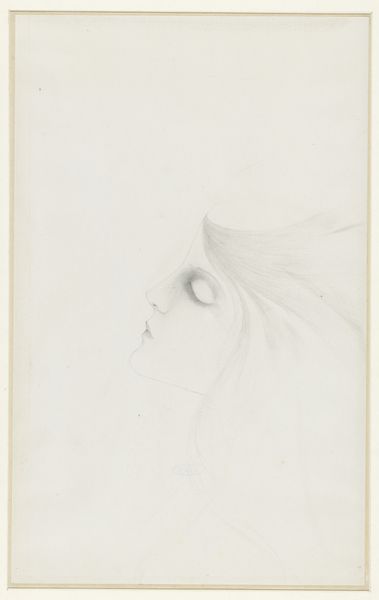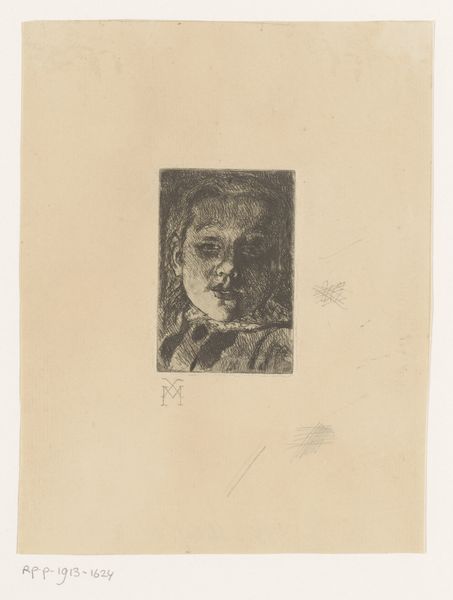
drawing, pencil
#
portrait
#
pencil drawn
#
drawing
#
pencil sketch
#
pencil drawing
#
pencil
#
academic-art
Dimensions: height 502 mm, width 390 mm
Copyright: Rijks Museum: Open Domain
Curator: Let’s turn our attention to this delicate pencil drawing, "Portret van een onbekende peinzende vrouw," or "Portrait of an Unknown Pensive Woman." Reijer Stolk created it in 1914. Editor: Immediately, I see a sense of quiet introspection. The soft lines create a hazy, almost dreamlike quality, despite the formal pose of the subject. She’s lost in thought, definitely. Curator: Indeed. Stolk's command of the pencil is striking. The way he uses subtle shading to convey both the form and the inner state of his subject… it’s really quite compelling. It makes you wonder about the labour involved in this style - academic, as you would call it. Editor: Well, look closely at the paper, its tooth. It's clearly not cheap stuff. This wouldn't have been a casual sketch, it would take time to develop an eye that delicate. It really speaks to the culture surrounding art education in the early 20th century and how important the medium of graphite was to artistic development. Curator: You’re right, there's an understated elegance, too, in her simple string of beads and the suggestion of lace. I feel this sense of sadness and I want to reach inside myself to explore the origin of it. It must be related to my memories and longing. Editor: Perhaps that pensive look hints at the unease brewing in Europe at that time. Think of all the social anxieties present when World War I was looming. That might add another dimension to the way the woman holds herself, her quiet composure amidst implied turbulence. I wonder whether her dress also follows a certain trend of practicality, since some had to give up fashion during these dire times. Curator: What I find interesting is, there's something eternally human captured in this image, this woman's quiet moment transcends time and material circumstance and speaks to the universal experience of being lost in thought, that interior landscape we all navigate. It's beautifully captured through a simple medium like graphite. Editor: Absolutely, and by really scrutinizing that graphite, we come to realize the complexity, expertise, and sociohistorical information held in its traces. I like to think of it this way now: not as something quiet and introspective but something extremely loud! Curator: Loud in its subtlety! It makes you look differently, doesn’t it? Editor: It certainly does. Let’s leave the audience to decide on that point, shall we?
Comments
No comments
Be the first to comment and join the conversation on the ultimate creative platform.


